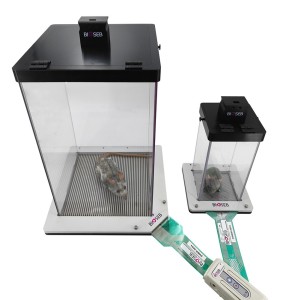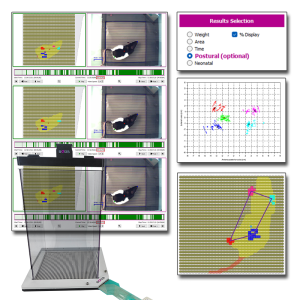Authors
H.-J. Im, J.-S. Kim, X. Li, N. Kotwal, D. Sumner et al.
Lab
Rush University Medical Center and University of Illinois, Chicago, USA.
Journal
Arthritis and Rhumatism
Abstract
OBJECTIVE: To verify the biologic links between progressive cellular and structural alterations within knee joint components and development of symptomatic chronic pain that are characteristic of osteoarthritis (OA), and to investigate the molecular basis of alterations in nociceptive pathways caused by OA-induced pain. METHODS: An animal model of knee joint OA pain was generated by intraarticular injection of mono-iodoacetate (MIA) in Sprague-Dawley rats, and symptomatic pain behavior tests were performed. Relationships between development of OA with accompanying pain responses and gradual alterations in cellular and structural knee joint components (i.e., cartilage, synovium, meniscus, subchondral bone) were examined by histologic and immunohistologic analysis, microscopic examination, and microfocal computed tomography. Progressive changes in the dynamic interrelationships between peripheral knee joint tissue and central components of nociceptive pathways caused by OA-induced pain were examined by investigating cytokine production and expression in sensory neurons of the dorsal root ganglion and spinal cord. RESULTS: We observed that structural changes in components of the peripheral knee joint correlate with alterations in the central compartments (dorsal root ganglia and the spinal cord) and symptomatic pain assessed by behavioral hyperalgesia. Our comparative gene expression studies revealed that the pain pathways in MIA-induced knee OA may overlap, at least in part, with neuropathic pain mechanisms. Similar results were also observed upon destabilization of the knee joint in the anterior cruciate ligament transection and destabilization of the medial meniscus models of OA. CONCLUSION: Our results indicate that MIA-induced joint degeneration in rats generates an animal model that is suitable for mechanistic and pharmacologic studies on nociceptive pain pathways caused by OA, and provide key in vivo evidence that OA pain is caused by central sensitization through communication between peripheral OA nociceptors and the central sensory system. Furthermore, our data suggest a mechanistic overlap between OA-induced pain and neuropathic pain.
BIOSEB Instruments Used
Dynamic Weight Bearing 2.0 (BIO-DWB-DUAL)
Source :
http://onlinelibrary.wiley.com/doi/10.1002/art.27608/abstract

 Douleur - Allodynie/Hyperalgésie Thermique
Douleur - Allodynie/Hyperalgésie Thermique Douleur - Spontanée - Déficit de Posture
Douleur - Spontanée - Déficit de Posture Douleur - Allodynie/Hyperalgésie Mécanique
Douleur - Allodynie/Hyperalgésie Mécanique Apprentissage/Mémoire - Attention - Addiction
Apprentissage/Mémoire - Attention - Addiction Physiologie & Recherche Respiratoire
Physiologie & Recherche Respiratoire




































 Douleur
Douleur Système Nerveux Central (SNC)
Système Nerveux Central (SNC)  Neurodégénérescence
Neurodégénérescence Système sensoriel
Système sensoriel Système moteur
Système moteur Troubles de l'humeur
Troubles de l'humeur Autres pathologies
Autres pathologies Système musculaire
Système musculaire Articulations
Articulations Métabolisme
Métabolisme Thématiques transversales
Thématiques transversales Congrès & Meetings
Congrès & Meetings 
